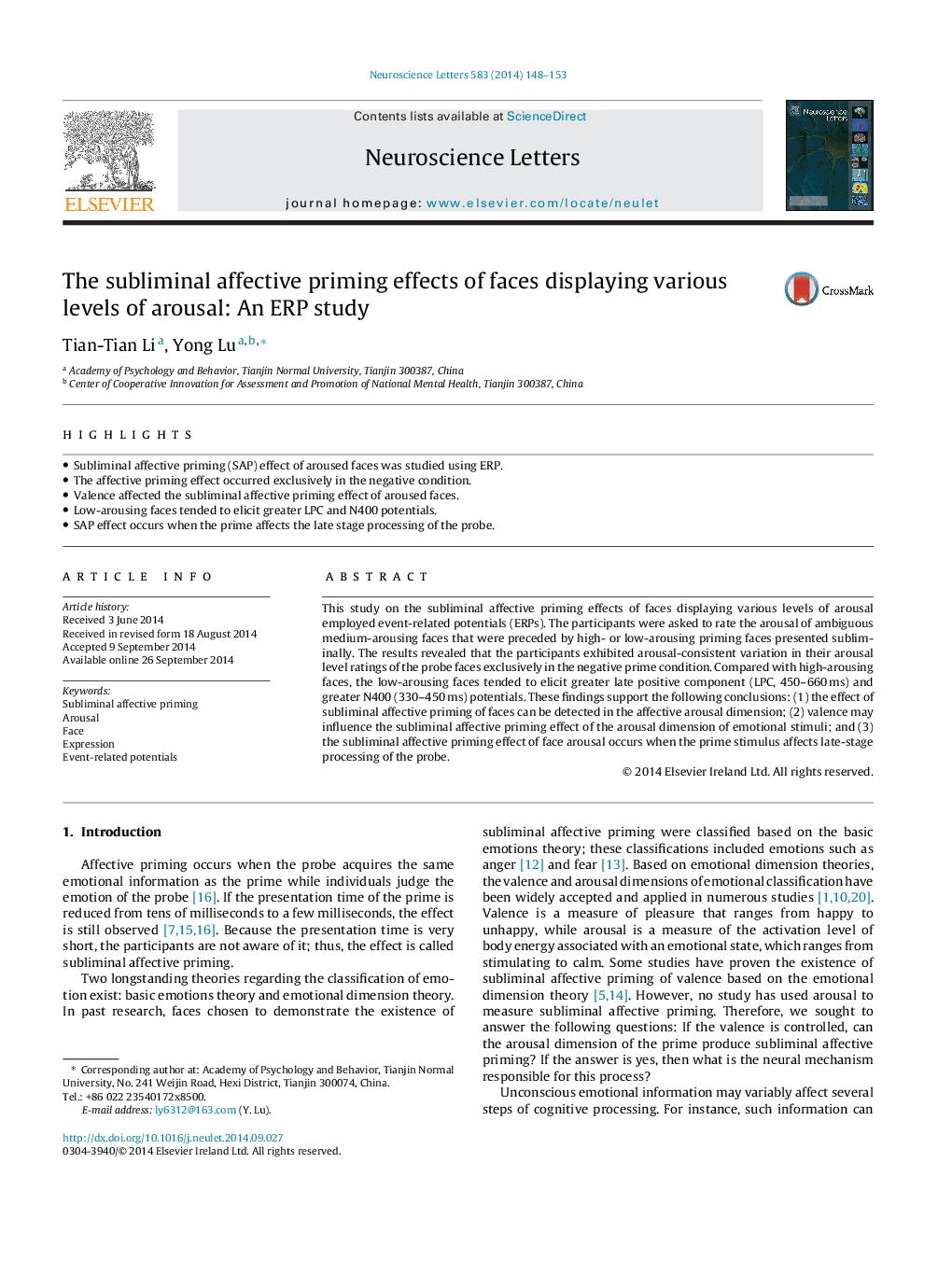| Article ID | Journal | Published Year | Pages | File Type |
|---|---|---|---|---|
| 4343570 | Neuroscience Letters | 2014 | 6 Pages |
•Subliminal affective priming (SAP) effect of aroused faces was studied using ERP.•The affective priming effect occurred exclusively in the negative condition.•Valence affected the subliminal affective priming effect of aroused faces.•Low-arousing faces tended to elicit greater LPC and N400 potentials.•SAP effect occurs when the prime affects the late stage processing of the probe.
This study on the subliminal affective priming effects of faces displaying various levels of arousal employed event-related potentials (ERPs). The participants were asked to rate the arousal of ambiguous medium-arousing faces that were preceded by high- or low-arousing priming faces presented subliminally. The results revealed that the participants exhibited arousal-consistent variation in their arousal level ratings of the probe faces exclusively in the negative prime condition. Compared with high-arousing faces, the low-arousing faces tended to elicit greater late positive component (LPC, 450–660 ms) and greater N400 (330–450 ms) potentials. These findings support the following conclusions: (1) the effect of subliminal affective priming of faces can be detected in the affective arousal dimension; (2) valence may influence the subliminal affective priming effect of the arousal dimension of emotional stimuli; and (3) the subliminal affective priming effect of face arousal occurs when the prime stimulus affects late-stage processing of the probe.
